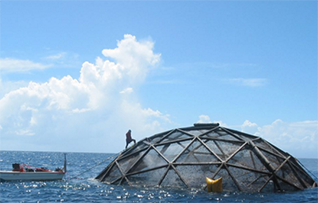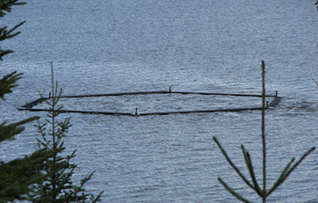 The offshore sector is currently a small fraction of overall global aquaculture, but it will play an increasingly important role in meeting the anticipated demand for seafood as the world population grows past eight billion people by 2030.
The offshore sector is currently a small fraction of overall global aquaculture, but it will play an increasingly important role in meeting the anticipated demand for seafood as the world population grows past eight billion people by 2030.
[Interested in offshore aquaculture innovation? Check out the 7 cutting-edge offshore aquaculture innovations and designs]
That was the conclusion of the sixth Offshore Mariculture Conference, which took place in early April in Barcelona, Spain, gathered the world’s experts in offshore aquaculture to harness their knowledge, identify impediments and brainstorm potential solutions.
This year’s conference explored the challenges and prospects of
Ernesto Peñas Lado, the director of policy development and coordination for the European Commission’s Directorate-General for Maritime Affairs and Fisheries, said aquaculture – and specifically offshore aquaculture – was a clear path forward to feeding a growing global population.
“A large amount of this untapped potential lies offshore. Until recently the costs of technology and the economic incentive associated with moving offshore were not aligned, but this is changing rapidly,” he said.
Because of its high costs, there are only a handful of offshore developments operating in the European Union, Peñas Lado said, though the E.U.’s aquaculture sector employs around 85,000 people and is worth between EUR 3.5 and 4 billion (USD 4 billion to 4.6 billion) to the economy each year. Lado noted that aquaculture is one of the five pillars of the EU's Blue Growth strategy, and offshore
Delegates heard from leaders of current research projects and from farmers who are developing their own innovative offshore mariculture plans.
For example, the E.U.’s EUR 12 million (USD 13.7 million) ‘Diversify’ project is investigating new fish species for the Mediterranean, where aquaculture is already widespread in inshore areas and opportunities lie further from the coast. According to Constantinos Mylonas, Diversify project coordinator at the Hellenic Centre for Marine Research, demand has dropped for sea bass and sea bream, which are the most popular species currently farmed in the Mediterranean.
“Consumers are increasingly moving away from small plate-sized fish and want convenient, clean fish meal preparation instead,” she said.
One solution is to grow these species larger to allow fillet production, but this would increase the cost. Instead, Diversify is looking to farm larger, fast-growing species such as
Michael Rubino, director in the office of aquaculture at NOAA Fisheries Service, explained that the United States is struggling to take advantage of its aquaculture potential. One major cause is the difficult and lengthy permitting process, Rubino said. Despite the challenges, a number of large projects are on the horizon, including two in off the coast of California: the Catalina Sea Ranch mussel farm and the Rose Canyon project that will grow yellowtail jack, white
Off Hawaii, the Velella project is still waiting for permits to continue trials. Mariculture pioneer Neil Anthony Sims explained that the latest version of his submersible pod system attached to a single
Donna Lanzetta, CEO of Manna Fish Farms, aims to open the first finfish farm in U.S. federal waters, but is also still in the process of securing permits. Lanzetta eventually hopes to farm around 2,000 metric tons of striped bass in submersible pods, 14 nautical miles off the east coast of Long Island, New York. She also plans to introduce a multi-trophic system, producing shellfish,
In Canada, ice is a major impediment to offshore 
“A farm in Canada is using it ... and successfully keeping the fish at depth,” he said.
Offshore aquaculture in Latin America is a virtually unexplored field, according to Alonso Echevarría Ubilla, of the AEX Group, with cobia producer
Javier Ponce, the founder of Smart Floating Farms, a Barcelona-based company that is designing solar-powered vertical farms that float on pontoons, shared his aspirations for the development of a multi-layered floating polyculture platform that combines mariculture, hydroponics and solar power, as a complementary alternative to other food production systems.
Paul Holthus, founding president and CEO of the World Ocean Council, praised the opportunity presented by aquaculture. He announced at the conference that his organization is creating an ocean investment platform to encourage ocean users to cooperate in identifying opportunities and challenges.
In summarizing offshore aquaculture’s future impact, conference chairman Alessandro Lovatelli, of the Aquaculture Office for the Food & Agriculture Organization of the United Nations (FAO), called for continued government support of the fledgling offshore agriculture industry.
“(Offshore) aquaculture can have very little impact on the environment if done properly, and this needs to be communicated effectively to people,” Lovatelli said. “They need to be continually reminded of the importance of aquaculture, but no single company can do this; governments need to get involved.”
Editor's note: A previous version of this story incorrectly stated that Mike Meeker's submersible cage system is still under development. Meeker's cage is now being used commercially. The article also incorrectly state it had been used by a cod






